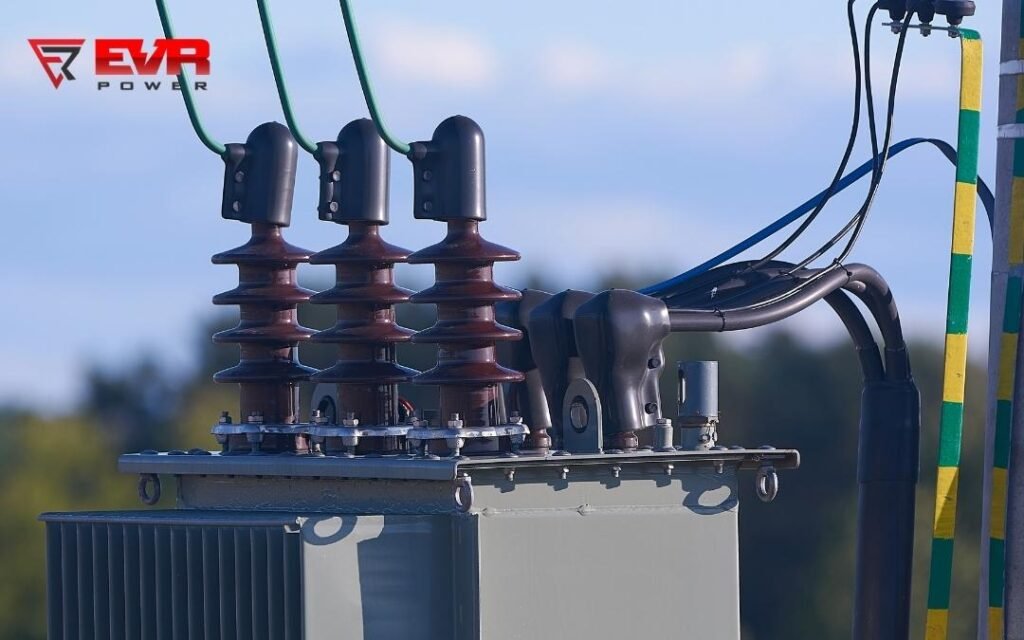Transformer oil is a fluid that is used in transformers to transfer electrical strains from one circuit to another. It is made to protect the machinery during the process of changing over the power through the process of metamorphosis. This process is termed transformation and hence the name. The transformer oil is a dielectric fluid that is added to change the dielectric strength of the insulating fluid in transformers.
We have discussed in detail what transformer oil is, its uses, properties, types, factors to test in transformer oil and factors to look forward to when testing transformer oil.
Transformer Oil Types
There are two types of oils used at present which are-
- Paraffinic oil
- Naphthenic oil

Paraffinic oil
It is a mineral insulating oil derived from special crudes and contains a substantial amount of n-paraffin. Paraffin oil has less oxidation and has a boiling point of about 530°C. Due to high wax content, the pour point is high compared to naphthenic oil. Oxidation products are insoluble within the oil.
Naphthenic oil
It is a mineral insulating oil derived from particular crudes which contain very low n-paraffin. Naphthenic oil has a boiling point of about approximately 425°C. This oil is comparatively more readily corroded than paraffinic oil. Due to less wax content, the pour point is less compared to paraffinic oil. The oxidation products are soluble within the oil. The paraffin-based crudes generate an unsolvable sludge due to corrosion to increase viscosity. Therefore it will reduce overheating, service life and heat transfer. At relatively fewer temperatures like -40°C, Naphthenic oils include aromatic components.
Paraffin oil produces less sludge since it does not get easily oxidised as compared to naphthenic oil. The sludge produced by naphtha based oil is more easily removed than the sludge from the paraffin-based oil because sludge produced by naphtha based oil is more soluble. If sludge piles up at the bottom of the transformer, it will interrupt the operation of the transformer.
In spite of naphthenic oil’s superiority, paraffin oil is the most commonly used transformer oil worldwide.
Transformer Oil and its uses

Transformer oil aka insulating oil is a special type of oil that is stable at high temperatures and has excellent electrical insulation. Transformer oil is basically used for two purposes – as an insulating material and a cooling agent.
1. Insulating material
Transformer oil plays as an insulator and resists high voltage because it includes high dielectric strength.
2. Coolant
The transformer coils can be designed with copper that carries a high current so that the coils become hot. Since the coil is an excellent heat conductor, transformer oil can be used to reduce the temperature of the copper coil preventing it from burning.
Properties of Transformer Oil
There are certain properties to meet for an oil to be used as transformer oil. They are listed below:
- High specific resistance to get high insulation resistance.
- High specific heat capacity for better heat conductivity.
- High firing point to avoid catching fire easily.
- Low viscosity offers less resistance to the conventional flow of oil thereby not affecting the cooling of a transformer.
- Should not absorb moisture easily
- The electric, chemical and physical properties are discussed below:
1. Electrical Property
- Dielectric strength– It is also known as breakdown voltage(BDV). It is measured by observing what voltage, sparking strands between two electrodes are immersed in the oil, separated by a specific gap. If the value of BDV is low, it indicates the presence of moisture content and conducting substances. The minimum BDV or dielectric strength of the transformer at which the oil can be safely used is 30 KV.
- Specific oil resistance– It is a measure of DC resistance between two opposite sides of a one-centimetre cube block of oil. The resistivity of oil decreases with an increase in temperature. The unit of specific oil resistance is ohm-cm. The minimum standard specific resistance of transformer oil at 90ºC is 35 × 1012 ohm-cm, and at 27ºC, it is 1500 × 1012 ohm-cm.
- Dissipation factor of dielectric or tan delta- It is also known as the loss factor or tan delta of transformer oil. Leakage current will flow when insulating material is placed between the live part and the grounded part of electrical equipment. The insulation current ideally leads the voltage by 90º. The voltage is led by the current through the insulator with an angle a little bit shorter than 90º since no insulating material is dielectric in nature. The transformer oil’s dissipation factor of dielectric or tan delta is the tangent of the angle by which it is short of 90º.
2. Chemical Property
- Water content- Water content in transformer oil unfavourably affects the dielectric properties of the oil, hence it is not wanted. The allowed water content in an oil is up to 50 parts per million.
- Acidity- The acidity test should be done to check the acidic constituents of contaminants. It is a harmful property. The water content in the oil becomes soluble in the oil if the oil becomes acidic. The acidity of oil is expressed in mg of KOH required to neutralize the acid present in a gram of the oil.
3. Physical Property
- Flashpoint- It is the temperature at which the oil gives enough vapour to produce a flammable mixture with air.
- Pour point- Pour point is the minimum temperature at which the oil starts flowing under standard test conditions.
Why is Transformer Oil Testing Important?

Transformer oil must need to be tested periodically because of the following reason:
- Proper testing can increase the lifespan of the transformer which reduces the cost for the replacement of the transformer.
- The ultimate failures of the transformer can be prevented.
- It ensures safety.
- Oil costs can be decreased.
Factors to Test in Transformer Oil
When performing an oil test there are certain common things that you should look forward to:
- Interfacial tension
- Corrosive sulphur
- Acid number
- Specific resistance
- Power factor of liquid
- Visual examination
- The breakdown voltage of the dielectric
Conclusion
In a nutshell, we have discussed what is transformer oil and its uses, its properties, why is transformer oil testing important, types of transformer oil and factors to look forward to when performing an oil test.
If you need to know more about transformers, EVR Electricals, the leading transformer manufacturer in India is here to help you.
Do you know more about transformer oil? The comment box is all yours to share and to suggest things you know.
To quote, “No one knows everything. But together we know a whole lot”.
Simon Sinek


0 Comments
Trackbacks/Pingbacks